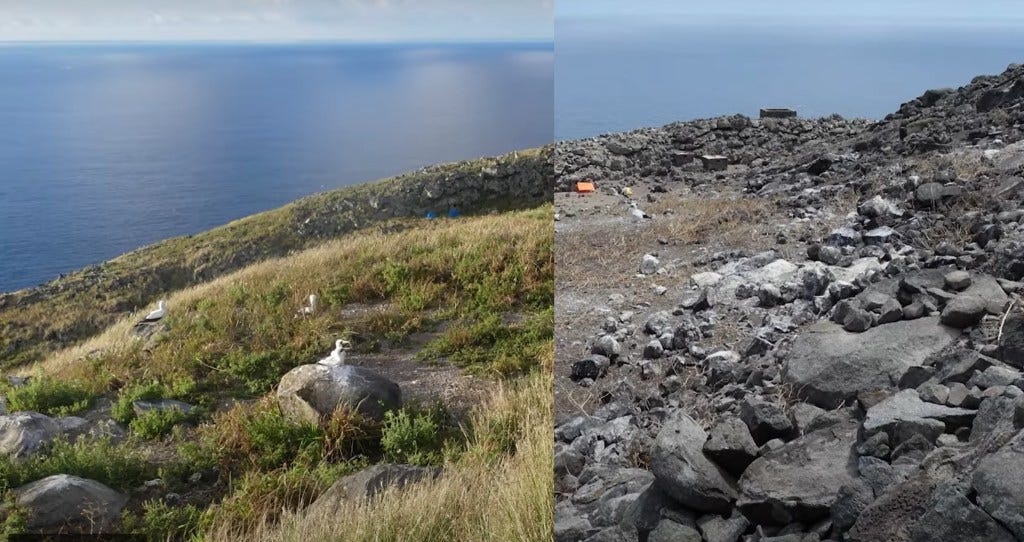Up till 2017, a herd of 60 goats roamed the Caribbean island of Redonda, keeping it a barren moonscape. Along with invasive rats, these voracious herbivores kept the island’s native flora and fauna struggling to survive. After the goats were relocated and the rats eradicated, Redonda quickly transformed to a lush wildlife sanctuary. Now, Redonda, the third island of Antigua and Barbuda, has been designated one of the biggest protected areas in the Caribbean.

The new protected area – named the Redonda Ecosystem Reserve – covers almost 30,000 hectares of land and sea, including the entire island, its surrounding seagrass meadows and a 180 square-kilometer coral reef. Though largely unexplored, the new protected area is believed to contain at least 30 globally threatened and near-threatened species, along with globally important seabird colonies.
Following the removal of the invasive rats and feral goats in 2017, Redonda started to come back to life incredibly quickly. Total vegetation biomass has increased by more than 2,000%, 15 species of land birds have returned and numbers of the endemic lizards have increased by more than fourfold. In particular, the population of Redonda ground dragons – a critically endangered lizard – has increased by 13-fold since 2017.
“To date, the restoration of this precious landscape has been truly remarkable,” said Johnella Bradshaw, Redonda program coordinator, EAG. “So much hard work and dedication, from so many people, has gone into making the establishment of the Redonda Ecosystem Reserve possible – this designation will ensure we can continue rewilding the island to the beautiful, biodiverse environment it once was.”
When Redonda was first documented by Europeans in 1493, it was, like many Caribbean islands, full of life, but European colonizers brought invasive species to the island, which over time destroyed its natural ecosystem. Invasive rats preyed on native wildlife, and feral goats left behind by guano miners ravaged the plants. Redonda’s unique species slowly disappeared and a number were driven extinct. As the vegetation disappeared, soil and rocks slid into the sea, smashing and choking the coral reefs surrounding the island.
Since the removal of the invasive species, Redonda has seen a spectacular recovery, with thousands of native trees taking root and anchoring the soil, seabirds returning to nest in greater numbers and many native animal and plant populations rising exponentially.





It is heartening to know that this earth can recover despite us, and sometimes, because of us.